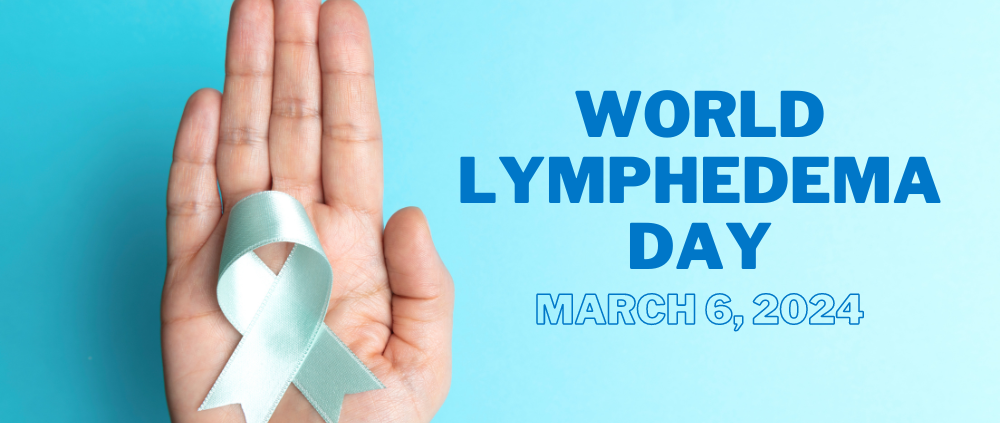World Lymphedema Day
What is Lymphedema?
Lymphedema is the accumulation of excess lymph fluid in tissues, leading to swelling. It occurs when the lymphatic system, responsible for draining fluid from tissues, is compromised. Causes include infection, cancer, scar tissue from radiation therapy, or surgical removal of lymph nodes. This swelling can affect various body parts like arms, legs, shoulders, hands, fingers, chest, or neck, making the skin feel tighter or thicker. Symptoms may include aching, tingling, weakness, and joint pain, limiting mobility. Those affected are also prone to recurrent infections in affected limbs.
How Can Physical Therapy Help?
Physical and occupational therapists can craft a tailored treatment regimen to manage swelling and aid in your return to normal activities. A common treatment plan for lymphedema is complete decongestive therapy or CDT. CDT includes manual lymphatic drainage, personalized exercise programming, compression bandaging, and education on skin and nail hygiene to reduce the risk of infection. Physical and occupational therapists will carefully monitor your progress throughout your treatment sessions and once swelling has decreased to the desired measurements, they will help you to take over your own care.
While all physical and occupational therapists are prepared by their education and experience to treat lymphedema, you may want to consider treatment by a Certified Lymphedema Therapist (CLT). A physical therapist with a CLT certification has received intensive training on the management and treatment of lymphedema. The Find a PT tool built by the American Physical Therapy Association can help you find a CLT in your area.
Source: American Physical Therapy Association



